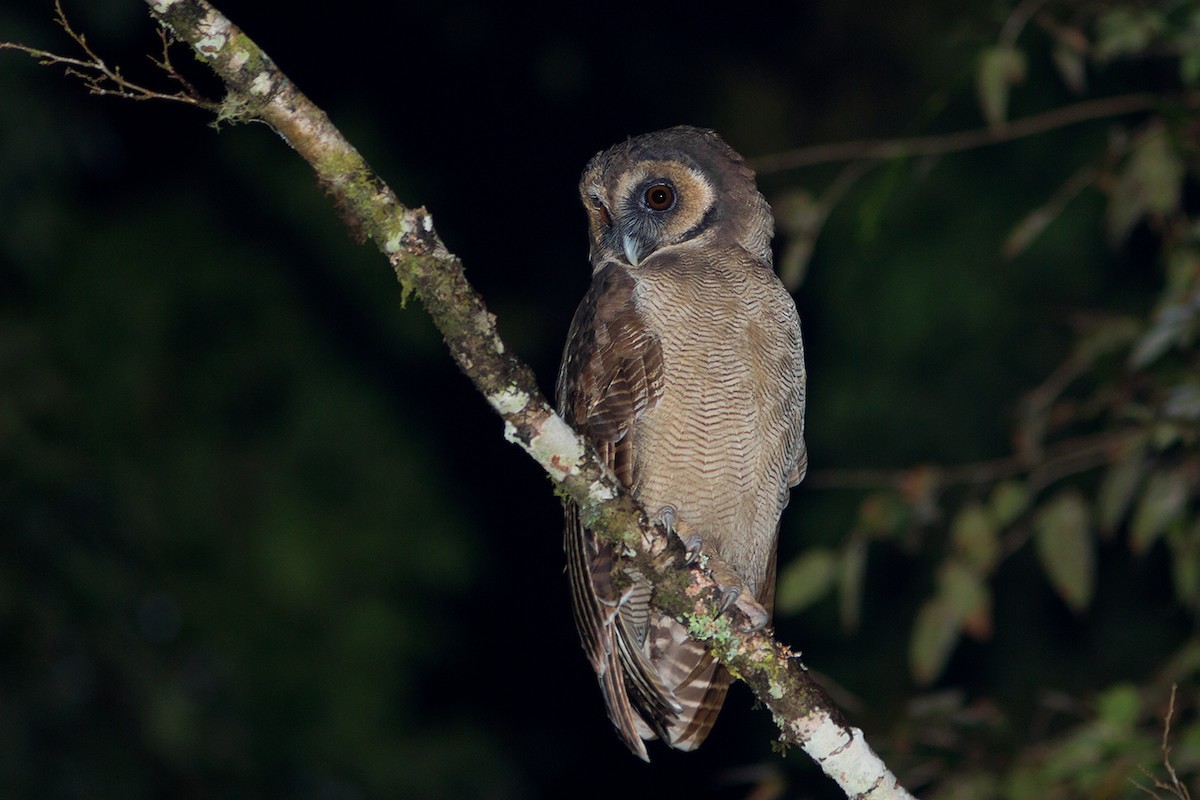Brown Wood Owl
A species of Earless Owls Scientific name : Strix leptogrammica Genus : Earless Owls
Brown Wood Owl, A species of Earless Owls
Botanical name: Strix leptogrammica
Genus: Earless Owls
Content
Description General Info
 Photo By Ayuwat Jearwattanakanok
Photo By Ayuwat Jearwattanakanok Description
The Brown Wood Owl (Strix leptogrammica) is found in India, Bangladesh, Sri Lanka, Indonesia, Taiwan, and south China. The brown wood owl is a resident breeder in south Asia. This species is a part of the family of owls known as typical owls (Strigidae), which contains most species of owl. It belongs to the earless owl genus Strix. The brown wood owl is medium large (45–57 cm), with upperparts uniformly dark brown, with faint white spotting on the shoulders. The underparts are buff with brown streaking. The facial disc is brown or rufous, edged with white and without concentric barring, and the eyes are dark brown. There is a white neckband. The sexes are similar in appearance. Their call is a (hoo) hoo hoo HOO, or a deep goke-goke-ga-LOOO, or a loud scream. Their alarm call is a bark, wow-wow. Some subspecies are known to produce distinct vocalizations; they are also different in appearance and parapatric, and might be distinct species: The northern Strix (leptogrammica) newarensis group (Himalayan wood-owl; present subspecies newarensis, ticehursti, laotiana and caligata) which occur from the Himalayan foothills of Kashmir east to Taiwan have a soft low to-hooh not unlike a rock dove cooing. S. (l.) bartelsi (Bartels's wood-owl), Javan wood-owl from Java, the southeasternmost taxon, has a loud, forceful, single HOOH! with long pauses between calls. This species is highly nocturnal and isn't commonly found in dense forests. It can often be located by the small birds that mob it while it is roosting in a tree. The diet of the brown wood owl consists mainly of small mammals, birds, and reptiles. 
Size
55 cm
Nest Placement
Cavity
Feeding Habits
Brown Wood Owl's primary diet includes small mammals like rodents and shrews, with occasional fruit bats. They also consume small birds, reptiles, large insects, and rarely fish. In the northern part of their range, bird prey such as doves, mynas, and even pheasants are more significant, showing a preference for partridges.
Habitat
The brown Wood Owl predominantly resides in dense, undisturbed broadleaved forests, with a preference for habitat types ranging from moist evergreen to moist deciduous forests. These birds are commonly found in areas away from human settlements across broader geographical regions including the Indian Subcontinent, China, Taiwan, and parts of Southeast Asia, like Borneo and Sumatra. Habitats may vary from lowland primary forests to forest edges in more montane zones.
Dite type
Carnivorous
General Info
Feeding Habits
Bird food type

 Photo By Ayuwat Jearwattanakanok
Photo By Ayuwat Jearwattanakanok